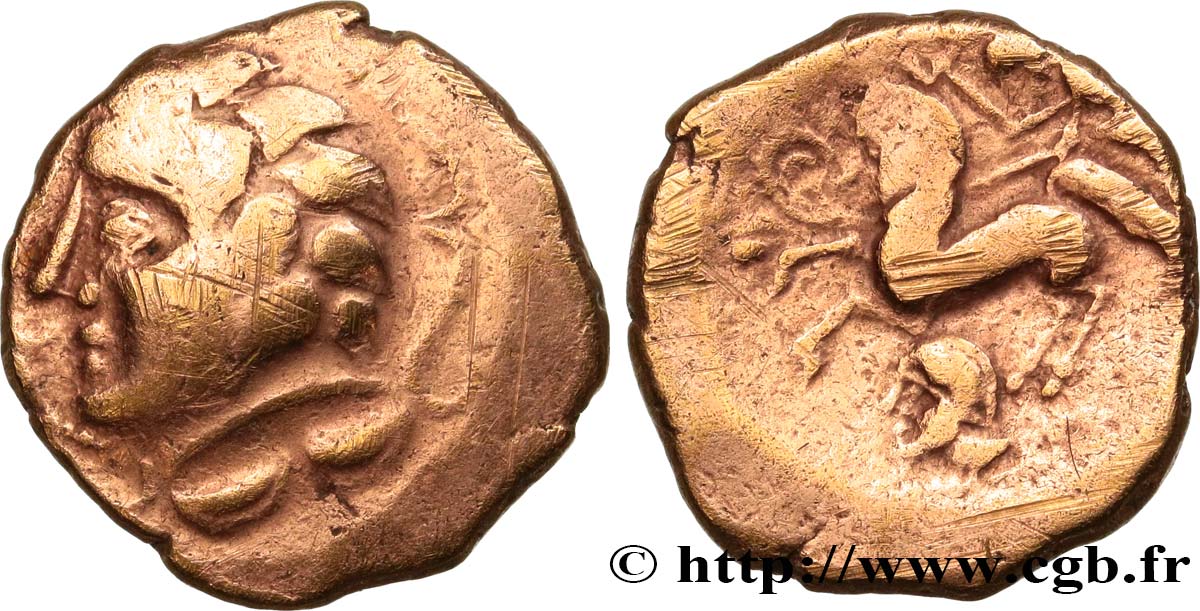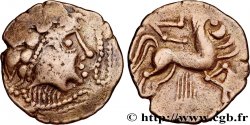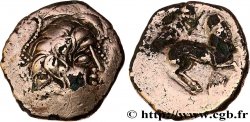bga_503207 - PICTONES (Area of Poitiers) Statère d’électrum à la tête casquée, droit et revers à gauche
2 200.00 €(Approx. 2552.00$ | 1914.00£)
Quantity
Add to your cart

Type : Statère d’électrum à la tête casquée, droit et revers à gauche
Date: Ier siècle avant J.-C.
Mint name / Town : Poitiers (86)
Metal : electrum
Diameter : 20,5 mm
Orientation dies : 1 h.
Weight : 6,49 g.
Rarity : R2
Coments on the condition:
Statère en or rouge, de frappe décentrée des deux côtés, mais avec les types de droit et de revers néanmoins presque complets. Au revers, l’empreinte du bord du coin est bien nette devant la petite tête coupée. Usure homogène avec de très légères rayures superficielles sur la joue au droit et sur le cheval au revers
Catalogue references :
Predigree :
Cet exemplaire provient de MONNAIES 41, n° 1566
Obverse
Obverse legend : ANÉPIGRAPHE.
Obverse description : Tête (d’Ogmius) à gauche, la chevelure en grosses mèches, d’où partent des cordons perlés.
Reverse
Reverse legend : ANÉPIGRAPHE.
Reverse description : Aurige tenant une couronne dirigeant à gauche un cheval androcéphale ; dessous, une petite tête casquée à gauche.
Commentary
Ce type de statère bien précis appartient au groupe B “profil de style dit aquitanique”, mais au type IV “profil à gauche, au différent de la petite tête”. Ce type est très rare. Aucun exemplaire au différent de la petite tête ne figurait dans le trésor d’Ouzilly.
This very specific type of stater belongs to group B “so-called aquitanic style profile”, but to type IV “profile on the left, different from the small head”. This type is very rare. No different example of the little head appeared in the Ouzilly treasure.
This very specific type of stater belongs to group B “so-called aquitanic style profile”, but to type IV “profile on the left, different from the small head”. This type is very rare. No different example of the little head appeared in the Ouzilly treasure.








 Report a mistake
Report a mistake Print the page
Print the page Share my selection
Share my selection Ask a question
Ask a question Consign / sell
Consign / sell
 Full data
Full data










